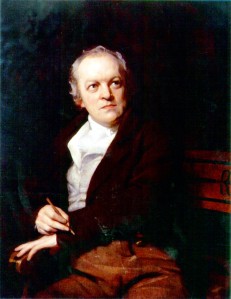 ‘Turning the Pages’ is a software solution for the display of digital manuscripts. It has been in development by Armadillo Systems since 2001 and has become more sophisticated over time, allowing users to access manuscripts from a variety of devices and engage with them in different ways. The main advantage of the software is to create digital ‘books’, focussing on the ability to manipulate the image on screen by turning digital pages and thus giving a user something approaching the haptic or tactile experience of looking at physical manuscripts. The images give a good impression of the three-dimensional manuscript, and a safe way for many people to examine old vellums, parchments and the like without any fear of damaging the precious original.
‘Turning the Pages’ is a software solution for the display of digital manuscripts. It has been in development by Armadillo Systems since 2001 and has become more sophisticated over time, allowing users to access manuscripts from a variety of devices and engage with them in different ways. The main advantage of the software is to create digital ‘books’, focussing on the ability to manipulate the image on screen by turning digital pages and thus giving a user something approaching the haptic or tactile experience of looking at physical manuscripts. The images give a good impression of the three-dimensional manuscript, and a safe way for many people to examine old vellums, parchments and the like without any fear of damaging the precious original.
But what does this technology mean for museums, galleries and other exhibitions? Perhaps the most well-known use of ‘Turning the Pages’ is by the British Library. While it is primarily used as a web app, accessible by anyone from their website, it is also used on-site. The Library’s Treasures Room has a great variety of artefacts from the archives, from literary manuscripts to sacred and scientific texts. The Treasures Room itself is a well-structured exhibition space, with logical and easy-to-navigate sections exhibiting, for the most part, openings of some of the more interesting and valuable books from the Library’s archive. Alongside these cases, ‘Turning the Pages’ terminals have been provided for visitors to explore the manuscripts in ways they would not otherwise be able.
Online, the British Library provides access to over 30 digital manuscripts through ‘Turning the Pages’, a wide selection that includes works by William Blake, Jane Austen and Leonardo da Vinci. As a web resource, it works well and there is plenty of opportunity to undertake lengthy examination of the manuscripts and the accompanying material (transcriptions, audio readings, and some interpretative or historical contexts). In the exhibition environment it seems to be different.
 In the Treasures Room, the touch-screen stations display the whole of the ‘Turning the Pages’ website and not only the material that is related to the items in the cases. In some respects, it feels like entering a new room within the exhibition, giving yet more to read and process within an exhibition that already has a plenitude of reading. Each terminal also shows the same material regardless of the section of the exhibition space in which it is located (i.e. one can look at a Jane Austen manuscript in the Science section and the R.F. Scott journal near the religious tomes, which complicates the otherwise excellent structure within the exhibition).
In the Treasures Room, the touch-screen stations display the whole of the ‘Turning the Pages’ website and not only the material that is related to the items in the cases. In some respects, it feels like entering a new room within the exhibition, giving yet more to read and process within an exhibition that already has a plenitude of reading. Each terminal also shows the same material regardless of the section of the exhibition space in which it is located (i.e. one can look at a Jane Austen manuscript in the Science section and the R.F. Scott journal near the religious tomes, which complicates the otherwise excellent structure within the exhibition).
Visitors to the Treasures Room use the ‘Turning the Pages’ consoles only lightly, with more attention to the experience of physically turning the pages of the virtual document rather than paying attention to its contents or historical importance. Perhaps the problem of having these stations within the exhibition space is that they offer too much information in a way that does not share the focus of the physical exhibition.
Yet, as ‘Turning the Pages’ was designed for the web, this information can quite easily have a life outside of the exhibition space. As the digital strategies of museums, archives and other literary institutions develop, it is likely that information-rich exhibitions such as the British Library’s Treasures Room will find some method for visitors to explore their holdings from other locations. Tablet users can already download, for a small fee, digital copies of the British Library’s manuscripts through apps such as iBooks.
 The early results of the English Literary Heritage Survey are beginning to suggest that visitors are more likely to go to an exhibition to see rare objects, such as manuscripts. 32% of people who have answered the survey so far state that this is the primary motivation for going to an exhibition. 36% of people stated that they would be interested in seeing a digital copy of a manuscript in an exhibition, though 27% would like to digitally collect information for further study outside of the museum environment. So far it is too early to reach any firm conclusions about this data, but when looking at it alongside the advancements ‘Turning the Pages’ has made to both the museum and research experiences, it seems probable that exhibitions and archives will spill over established boundaries with the use of digital technology and provide an opportunity for more people to experience the thrill of seeing literary manuscripts close up outside of traditional venues.
The early results of the English Literary Heritage Survey are beginning to suggest that visitors are more likely to go to an exhibition to see rare objects, such as manuscripts. 32% of people who have answered the survey so far state that this is the primary motivation for going to an exhibition. 36% of people stated that they would be interested in seeing a digital copy of a manuscript in an exhibition, though 27% would like to digitally collect information for further study outside of the museum environment. So far it is too early to reach any firm conclusions about this data, but when looking at it alongside the advancements ‘Turning the Pages’ has made to both the museum and research experiences, it seems probable that exhibitions and archives will spill over established boundaries with the use of digital technology and provide an opportunity for more people to experience the thrill of seeing literary manuscripts close up outside of traditional venues.